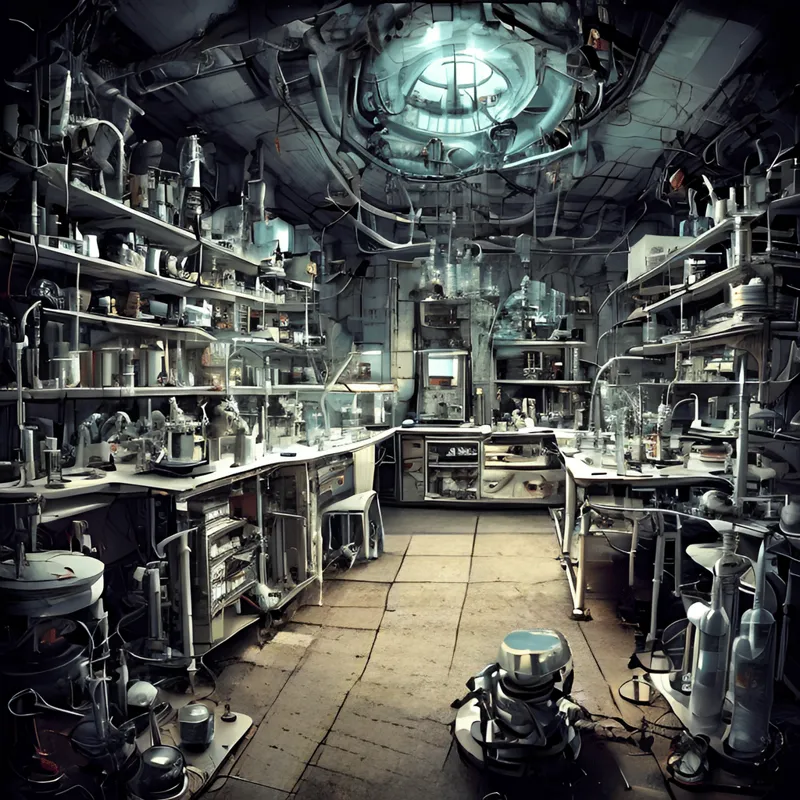
Control the forces of nature
The scientific method stands as the bedrock of scientific inquiry, guiding researchers through a systematic process of observation, questioning, experimentation, and analysis. This structured approach allows scientists to explore the mysteries of the natural world, providing valuable insights and driving progress in various fields.
In this article, we will explore the fundamental stages of the scientific method, from initial observations to drawing meaningful conclusions. Understanding this method not only illuminates the process of scientific discovery but also empowers individuals to think critically and engage with the world around them.
Observation

In the palm of one's hand
Observation serves as the cornerstone of scientific inquiry. Scientists keenly observe the natural world, noticing phenomena, patterns, or anomalies. These observations often arise from everyday experiences or previous research.

Power for it's own sake?
For instance, the observation that plants wilt when not watered leads to questions about the role of water in plant growth. Observations can be qualitative, such as the color change in leaves during autumn, or quantitative, such as measuring the rate of a chemical reaction.
Question

An idea
The question phase involves transforming observations into specific inquiries. Questions provide focus and direction to the research. A well-crafted question guides the formulation of a hypothesis and the design of experiments.

Chemistry
For example, the observation of a higher incidence of a disease in a particular region can lead to questions about possible causes, paving the way for scientific investigation into factors like environmental pollution or genetic predisposition.
Hypothesis

Machine heart
A hypothesis is a scientific guess or prediction based on existing knowledge and the question at hand. It proposes a causal relationship between variables and is essential for guiding the experiment.

A cluttered mind
A hypothesis must be testable and falsifiable, meaning it can be proven wrong through experimentation. Scientists use hypotheses to make educated predictions, like hypothesizing that increased sunlight will lead to higher plant growth, forming the basis for subsequent experimental design.
Experimentation

Sleek and intuitive
The experimentation stage involves designing and conducting controlled experiments to test the hypothesis. Controlled experiments allow scientists to manipulate one variable while keeping other factors constant.

Simulation
Control groups are used as a comparison to gauge the effect of the manipulated variable. For instance, in drug trials, the experimental group receives the drug while the control group does not, enabling researchers to assess the drug's effectiveness accurately.
Data Collection

Dichotomy
During experiments, data is collected meticulously. Scientists use various tools and instruments to gather quantitative data, such as measurements, and qualitative data, such as observations.
Precise data collection is vital for the reliability and validity of the study. Data can be represented in tables, graphs, or charts for better visualization and analysis.
Analysis

What we cannot understand
Data analysis involves processing and interpreting the collected information. Statistical methods are employed to identify patterns, correlations, or significant differences between groups.
Statistical analyses, such as t-tests or regression analysis, help scientists determine the reliability of their results. Through analysis, scientists can discern whether the data supports or contradicts the hypothesis, drawing meaningful insights from the experiment.
Drawing a Conclusion

The best solution we have
Based on the analysis, scientists draw conclusions regarding the hypothesis. If the results align with the hypothesis, it provides evidence in support of the initial prediction.

Self-reflection
These conclusions contribute to scientific knowledge, allowing researchers to develop theories or refine existing ones. If the results do not support the hypothesis, scientists reconsider their assumptions and may propose new hypotheses for future investigation.
Communication

The crucible of the real
Effective communication of findings is crucial for the scientific method to fulfill its purpose. Scientists present their results through research papers, conferences, and publications. Peer-reviewed journals ensure the quality and validity of the research.

Fuel
Clear communication enables other scientists to evaluate the study, replicate experiments, and further the scientific understanding in the field. Additionally, communicating findings to the public fosters scientific literacy and awareness, bridging the gap between researchers and society.
In essence, the scientific method embodies the spirit of curiosity and rigorous investigation. It underscores the significance of evidence-based reasoning, encouraging us to question, explore, and understand the world in a methodical manner. By following this systematic approach, scientists continuously expand the boundaries of human knowledge. Embracing the principles of the scientific method not only fuels scientific advancements but also cultivates a mindset of inquiry and discovery in all aspects of life.

















